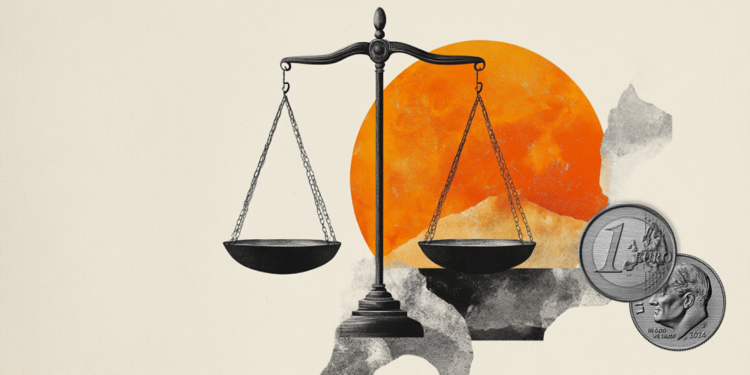When you think of Rio de Janeiro, the first image that comes to mind – no matter what your beliefs – is probably religious.
Located in Corcovado, the statue of Christ the Redeemer a granite peak on Corcovado Mountain, which together reach 700 meters above the city, opens its arms in a warm embrace, welcoming visitors to the city of samba.
“The first thing we see when we arrive at the city’s two airports is this brother of ours welcoming us with open arms,” says the Rio de Janeiro-based fashion designer Gilson Martins whose bags have been seen on the arms of celebrities such as Madonna and Michelle Obama. Does he look for the statue when he gets home from a trip abroad? No, he says – because there’s no need. “He’s the one who meets me when I get to Rio,” he adds.
For over a century, the statue is a symbol of Rio de Janeiro . In February 1922, the architect Hector da Silva Costa won the competition to carry out what seemed like a foolhardy project: a huge statue of Jesus on top of a mountain, as thin as a toothpick. It was inaugurated nine years later.
Yet nearly 100 years later, the statue – 30 metres high and with a wingspan of 30 metres – still stands and is now a symbol of the city, known throughout the world. Is it a miracle or proof of the engineering prowess of the Brazilians who built it?
For Paulo Vidal architect and superintendent of the Rio de Janeiro-based National Institute of Historic and Artistic Heritage (Iphan), which approves any restoration project, is the last option. “Civil engineering in Brazil has always been at the forefront of the world, especially in reinforced concrete construction,” he says.
And therein lies its secret. Although Christ the Redeemer looks like a stone sculpture, Vidal calls it a “concrete building covered in soapstone slabs.”
This does not mean that the construction was not heroic.
Reversing a “sea of atheism”

Religious propaganda inspired the creation of the statue. It was an attempt to reverse a post-World War I “sea of atheism” installing a figure of Jesus Christ to watch over Rio, visible from anywhere in the city – an omnipresent God made flesh of stone.
Da Silva Costa, who imagined the statue almost as a salute to the sun, with Jesus illuminated by dawn and surrounded by a pink “halo” at sunset, participated in and won a competition to choose the best designer of the statue.
It was not meant to be the simple figure we see today. Initially, he drew the sculpture of Christ on his way to Calvary, carrying his cross and a globe in his other hand. Fortunately, with the help of the artist Carlos Oswald he moved to a more simplified, modernist design in which Christ’s outstretched arms not only form the shape of the cross, but appear to embrace the city below it. The French-Polish sculptor Paul Landowski collaborated on the final design, further simplifying the shape, aligning it with the style Art Deco which was fashionable at the time.
Building such a colossal structure was always going to be difficult; it would be even more difficult to build Christ on top of a high and dangerous peak. Not only because of the difficulty of construction; but also of maintenance. “The big challenge was to design a project that would withstand the elements,” says Vidal, who states that the Corcovado peak is “exposed to very aggressive atmospheric conditions.”
What is more, this would be a sculpture to last a long time . “Carefully designed to withstand the elements and the test of time, as a symbol of human ingenuity and devotion,” explains Vidal.
Rio de Janeiro architects were already fans of concrete – the A Noite building, home to the city’s newspaper, was the tallest in Latin America when it opened in 1929. Da Silva Costa and his team took advantage of this experience, covering the concrete core of the Christ statue with steatite, or soapstone, known as an insulator and traditionally used as a cooking pot in Minas Gerais, explains Vidal. A century later, the cladding is still “well preserved”, he says.
The team opted for a mosaic effect – invisible from afar, but with details for those who see it up close. Sourced from a quarry in Minas Gerais, the soapstone was chosen for its calm, grayish-green hue. It was carved into small pieces – just over 1.5 cm long and 0.5 cm thick, according to Marcia Braga an architect and restoration specialist who led a major conservation project on the monument in 2010 – and attached to the cement “body.” There are about 6 million pieces in Christ the Redeemer in total.
Construction work began in 1926, financed mainly by the church in Rio, with the statue being inaugurated on October 12, 1931. Today it is part of the UNESCO World Heritage Site “Landscapes of Rio de Janeiro between the Mountains and the Sea”, established in 2012. Four years earlier, Iphan listed Christ for its historical importance . The work was declared a municipal heritage site in 1990. It is also the largest Art Deco statue in the world.
Constant conservation
In the last century, too It was necessary to be creative to preserve the work from the extreme weather conditions that punished Corcovado . The fact that a visit to Christ the Redeemer – whether by taking a small train to the peak or walking – is a must-do activity in Rio, with around 2 million visitors a year, means it’s even more important to keep the statue safe.
It is not an easy task. “Conservation is a major challenge because it is exposed to very aggressive atmospheric conditions – whether it is the sun’s rays, which cause the mantle and structure to expand and shrink every day, or the southwesterly winds that hit the statue laden with salt and sand, causing constant abrasion of the covering,” explains Vidal.
There’s also lightning. Rio de Janeiro is a city of storms, and this high peak attracts lightning like bees to a honeypot. Lightning rods were originally built on the statue’s head to improve the situation. Vidal says they’ve been expanded over the years as the storms have increased in intensity. In 2021, they quadrupled the “crown” of rods and expanded the grounding system.
The statue has undergone major conservation efforts every decade since 1980, but Vidal says the site is monitored “constantly” for any emergency maintenance that may be needed. “We know the materials, the degradation processes, the aggressive agents and the behavior of the structure,” he says.
Christ has five large, covered holes for curators to enter—one at the top of the head and four more at the shoulders and elbows. There are 14 smaller holes that, when opened, help with air circulation, Braga says. “Inside the statue, you feel completely protected from the elements and the environment,” she says. “It’s quiet—it’s a very strong structure, and as you climb up to the head, the gaps to get through get very narrow. When you finally get to the top of the head, it’s a wonderful feeling of freedom.”
Replacement of 300 thousand tiles

Braga — who calls the restoration project a “huge responsibility” — was 50 when she worked on the statue. “I felt like it was a major milestone in my professional career,” she says.
In a 2011 article about the project, shared with CNN she wrote that her team found spores from the Atlantic Forest on the statue – making the monument even more representative of Rio and Brazil as a whole. The bacteria were cleaned with jets of steam and water at 70º C. The statue was also restructured.
No detail is overlooked during the conservation projects, the most recent of which took place between 2020 and 2022. Soapstone from the original quarry has been depleted over the past century—“this color is increasingly difficult to find in the natural world,” Braga wrote of his conservation project—so when mosaic pieces need replacing, restorers carefully examine stone from other quarries in Minas Gerais to try to match the original color as best as possible.
During the renovation, Braga rejected 80 percent of the replacement tesserae, choosing only those that best matched the original color. She also replaced stones that had been added in previous restorations but did not match the colors well, replacing 5 percent of the 6 million tesserae in total.
These gigantic efforts are worth it, says Vidal. “Christ the Redeemer is an iconic image that promotes the city and the country to the world,” he says. “It attracts tourism and consequently foreign exchange to the city.”
Gilson Martins agrees. The Christ the Redeemer bags are his best-sellers, tied with those featuring Sugarloaf Mountain.
‘Like a childhood friend’
For the people of Rio, Christ became like a member of the family. Tom Jobim the bossa nova icon who composed “The Girl from Ipanema,” wrote about his “open arms over Guanabara Bay” in his song “Samba do Avião.” Another song was simply called “Corcovado.” “From the window, you can see Corcovado, the Redeemer, how beautiful,” he wrote. “From the window you can see Corcovado, the Redeemer, how beautiful.”
Martins himself has produced two art exhibitions about the sculpture and recently released an EP, singing about the statue in three of the five songs. In fact, he says, it was childhood memories of seeing the monument that inspired his songwriting. “For me, he is my brother, my friend of many years, always present in my life,” he says of Christ. “It feels like having a childhood friend with whom I am very close, and he is always there to talk.”
Martin’s deep devotion to the concrete statue is a sentiment shared by Cariocas throughout the city. “For me, as a Carioca, architect and urban planner, Christ the Redeemer is a landmark of territorial identification. When I see Christ the Redeemer, I know where I am and that I am ‘home,’” says Vidal. “To be sung about in music, the statue needs to be loved by the people – and it is. It welcomes and embraces residents and visitors alike.”
For Francesco Perrotta-Bosch architecture critic and biographer of modernist architect Lina Bo Bardi, Corcovado is “the city’s most democratic landmark.” Rio de Janeiro is famous for being a place where great wealth and poverty coexist side by side, but in a way, the sculpture unites them.
“You can see it in rich neighborhoods and poor neighborhoods,” he says. “People from Rio will be able to see it from the South or North Zone and have a reference point to find their way around the city. Largely because of Corcovado, Rio becomes a city with many visual elements that help visitors not get lost in it.”
‘Some people cry’
Tourists seem to love the statue as much as locals do. Considered one of the seven modern wonders of the world, Christ the Redeemer is Rio’s most visited attraction, says the tour guide Cristina Arroio .
Your guests “think it’s amazing.” “Some people are very sensitive and cry. Some say it is a dream come true to climb to the top and stand close to the statue.” she says.
Gilson Martins, who can see the statue from his home, calls her “the Carioca hostess who welcomes Rio, Brazil and the world with open arms.”
“The climate of Rio is formed by an intense energy of human warmth, relaxation, joy, lightness, sensuality and receptivity,” he says. “Christ on top of Corcovado is an accomplice to all this Carioca spirit. It complements all the beauty of the beaches, Sugarloaf Mountain, Carnival, samba dancers and the whole Carioca way of being.”
It is fitting for Brazil’s laid-back, multicultural world that a sculpture built as a symbol of one religion has come to represent the welcoming atmosphere of the entire country. This is perhaps the greatest miracle of Christ the Redeemer.
Source: CNN Brasil
Johanna Foster is an expert opinion writer with over 7 years of experience. She has a reputation for delivering insightful and thought-provoking articles on a variety of subjects. Her work can be found on some of the top online news websites, and she is currently lending her voice to the world stock market.







